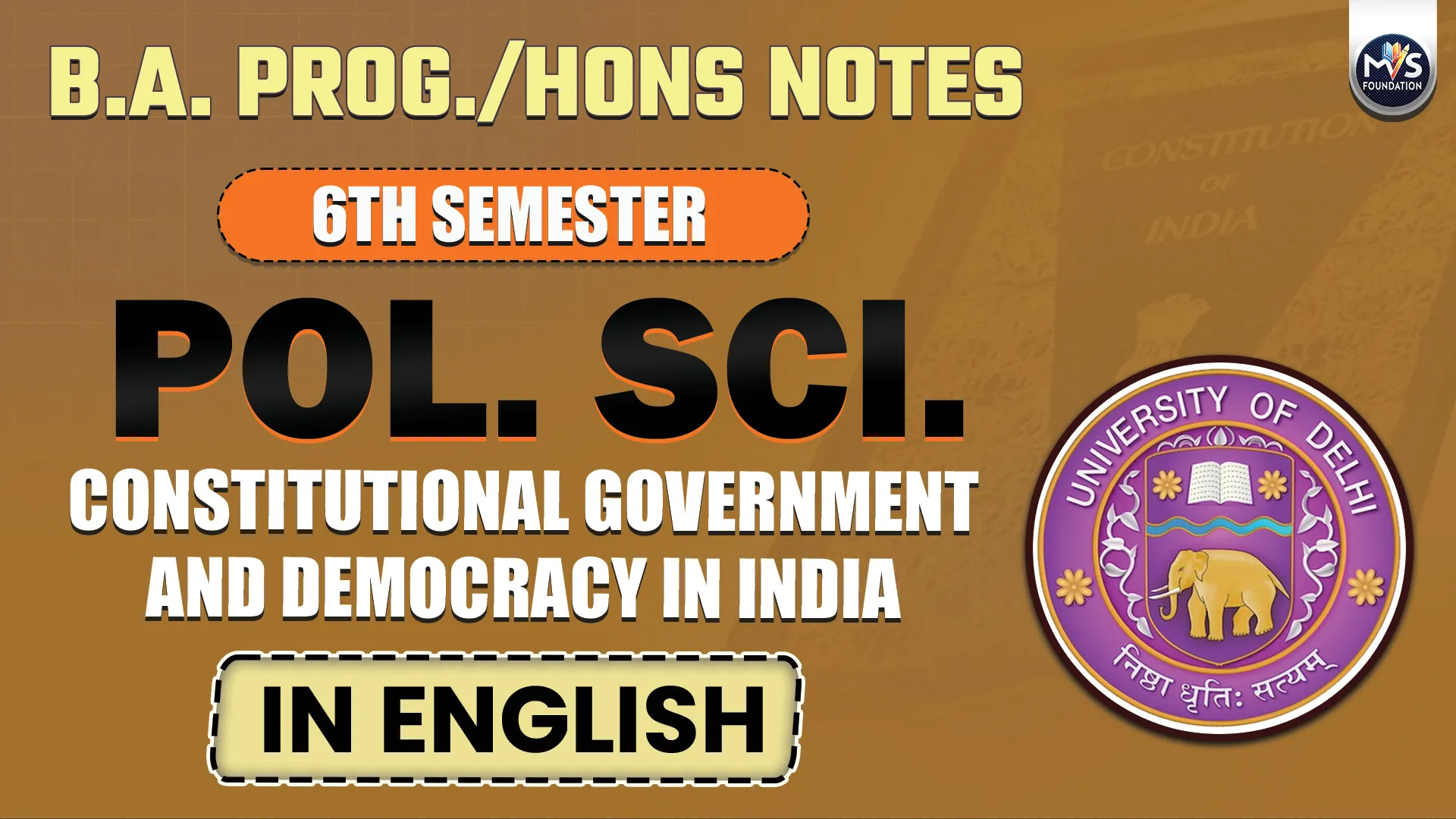
Get in Touch
We will get back to you within 24 hours.
Welcome to MVS Blog

Q1 - Discuss the features of the Indian Constitution. To what extent does the Preamble represent these features?
OR
Critically examine the main features and philosophy of the Indian Constitution.
Answer -
Introduction
The Constitution of India is the longest written constitution in the world, framed by incorporating the experiences and values of many countries. It was adopted on 26th November 1949 and came into effect on 26th January 1950. It not only outlines the system of governance but also reflects the ideas of society and politics. Its Preamble is considered the soul of the Constitution, which presents the essence of its core ideals and features.
Some Major Scholars' Views on the Indian Constitution
Main Features of the Indian Constitution:
1. Concept of Equality - The Indian Constitution talks not only about equality before the law
but also gives importance to social and economic equality. It allows special provisions for weaker sections. Thinkers like Nussbaum and Zoya Hasan believe these provisions are important efforts to bring real equality in society.
2. Special Provisions- The Constitution provides special provisions for various weaker sections of society such as Scheduled Castes, Scheduled Tribes, women, and the differently-abled. According to Rodrigues, these provisions are a means to make equality practical.
3. Minority Rights - The Indian Constitution gives religious and cultural minorities the right
to keep their language, culture, and traditions. It helps protect India's diversity. They can also keep their religious identity and take part in government. This creates a feeling of safety and unity among minorities for the nation.
4. Fundamental Rights - Fundamental Rights are those guaranteed by the Constitution that
ensure liberty, equality, and dignity to citizens. According to Article 13, any law violating these rights is void. The Constitution ensures that no institution can infringe upon these rights. Additionally, the 42nd Amendment added 11 Fundamental Duties to the Constitution.
5. Directive Principles of State Policy - Articles 38 to 47 of the Constitution guide the State
to work towards goals like social and economic justice, education, employment, nutrition, and gender equality. Austin called them "instruments of revolution." Though non-justiciable, they provide direction for policymaking.
6. Federal Structure - The Indian Constitution divides powers between the Centre and States
through three lists - Union List, State List, and Concurrent List. Under Article 371 and the Sixth Schedule, special powers are given to some states like Nagaland and Mizoram. This shows that India has a flexible federal structure based on states' needs.
Representation of These Features Through the Preamble :
The Preamble is considered the soul of the Constitution. It declares India as a Sovereign, Socialist, Secular, Democratic Republic and highlights key ideals like Justice, Liberty, Equality, and Fraternity. These ideals guide features like equality, fundamental rights, directive principles, special provisions, and the federal structure. Thus, the Preamble briefly but strongly represents all core features of the Constitution.
Philosophy of Indian Constitution:
1. Rajeev Bhargava's View - A Constitution That Breaks Social Domination Kamal Kumar believes that the Constitution was not just a framework of governance, but a hope to end injustice based on gender, caste, and religion. Articles of social justice like 15(3) and 15(4) empower the State to give special protection to weaker sections and ensure equal opportunities. For the marginalized and Dalits, it became a symbol of hope and change.
2. S. N. Agrawal and Austin's View - Gandhian vs. Western Thought Constituent Assembly member S. N. Agrawal supported Gandhian thinking. He believed the state's role should be limited, and citizens should lead social reform. On the other hand, according to Austin, the Assembly adopted Western traditions, giving importance to a strong state role to bring social revolution and deep change. This view sees the Constitution as an active, transformative document.
3. S. K. Choubey's View - A Constitution of Limited Social Revolution According to S. K. Choubey, the Indian Constitution's potential for social revolution was weakened during its making. He believes that values like equality, liberty, and secularism had already been achieved in Europe by 1848, so the social revolution in the Indian Constitution was not new. Many key provisions that could bring deep change were defeated during the drafting process itself.
Conclusion
The features of the Indian Constitution make it unique in the world. Its Preamble effectively reflects core values like equality, liberty, and democracy. The Constitution is not just a framework of governance but a vision of a just, equal, and inclusive society, which remains fully relevant even in today's context.
0 Response